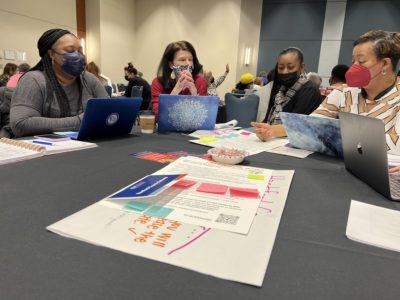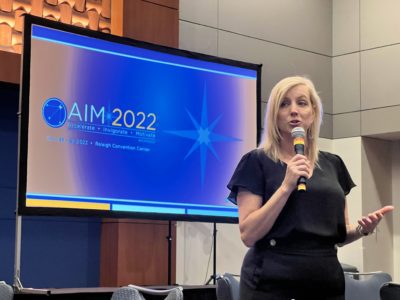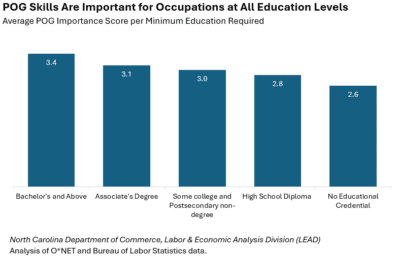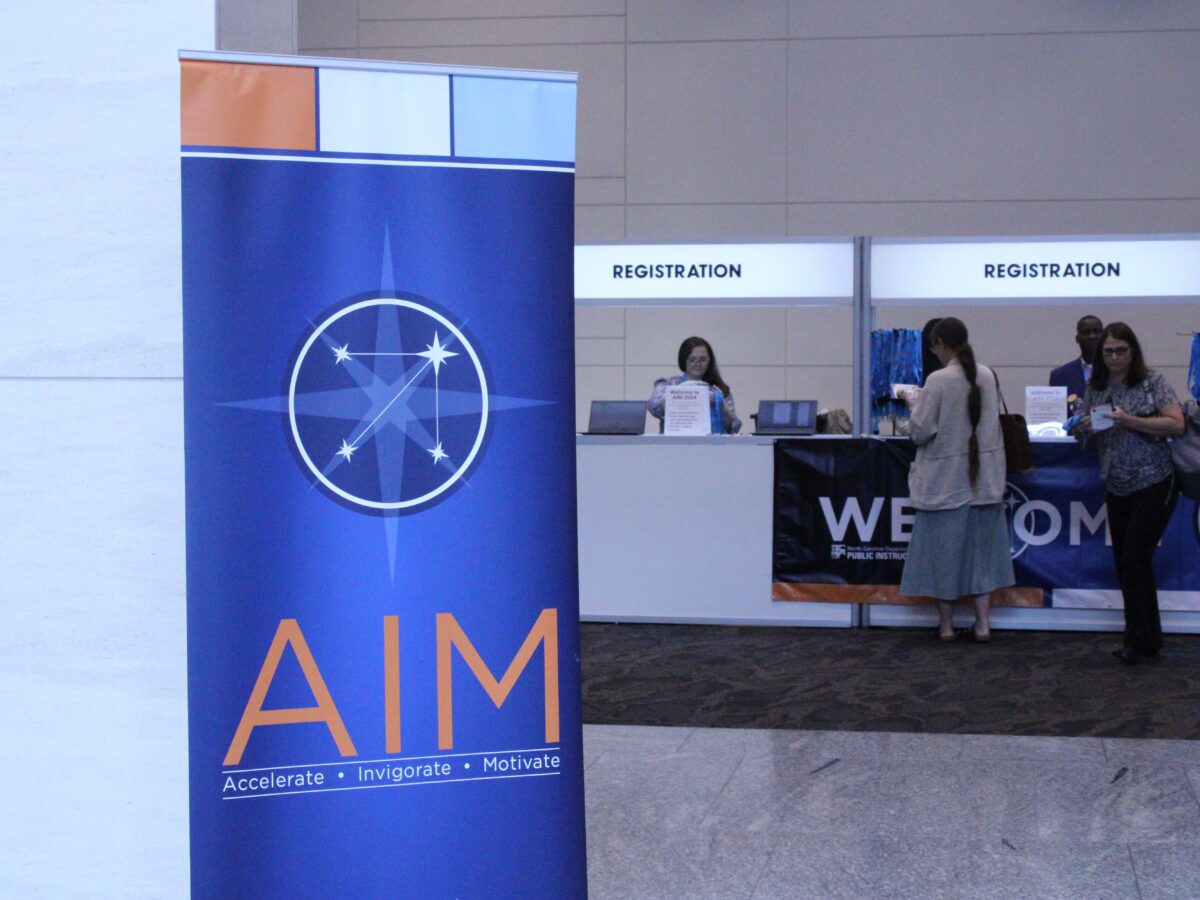
“You have now arrived at 500 Fayetteville Street.”
Many of the 2024 AIM conference attendees heard this phrase from their GPS as they arrived to the event. Little did they know, this was the start of AIM using technology to shepherd educators into the future.
For the past four years, the Department of Public Instruction has hosted a free, statewide conference for district leaders and teachers, with almost every district represented, as well as many charter schools and every lab school. Over 1,000 attendees spent three days at the Raleigh Convention Center for last week’s AIM Conference, which stands for accelerate, invigorate, and motivate.
![]() Sign up for the EdWeekly, a Friday roundup of the most important education news of the week.
Sign up for the EdWeekly, a Friday roundup of the most important education news of the week.
Catherine Truitt, state superintendent of public instruction, said that AIM is a rare opportunity for educators to “step away from the day to day of caring for others to hear from experts and collaborate with your peers.”
“It’s critical that we arm students with the tools and knowledge they need to succeed in an AI-driven world,” she said. “And to do that, we as educators have to be literate in AI, and it can be intimidating, especially for those of us who when we started teaching, we didn’t even have the expression one-to-one.”
Darlene Schaefer, who works for North Carolina Virtual Public Schools, has attended every AIM conference since its inception. She said that it has kept a consistent core format, and that’s why it works.
“I think overall, it’s good energy for educators. It’s a good way to kind of revive your practice, come up with some other ideas,” Schaefer said.
The conference offered more than 150 breakout sessions. Each of the sessions aligned with the seven competencies students should possess when they graduate from high school: adaptability, collaboration, communication, critical thinking, empathy, learner’s mindset, and personal responsibility.
It also included a two-hour research roundtable that covered more than 60 topics. Many of the first sessions were focused on artificial intelligence (AI) and what technology means to a student’s future employability.
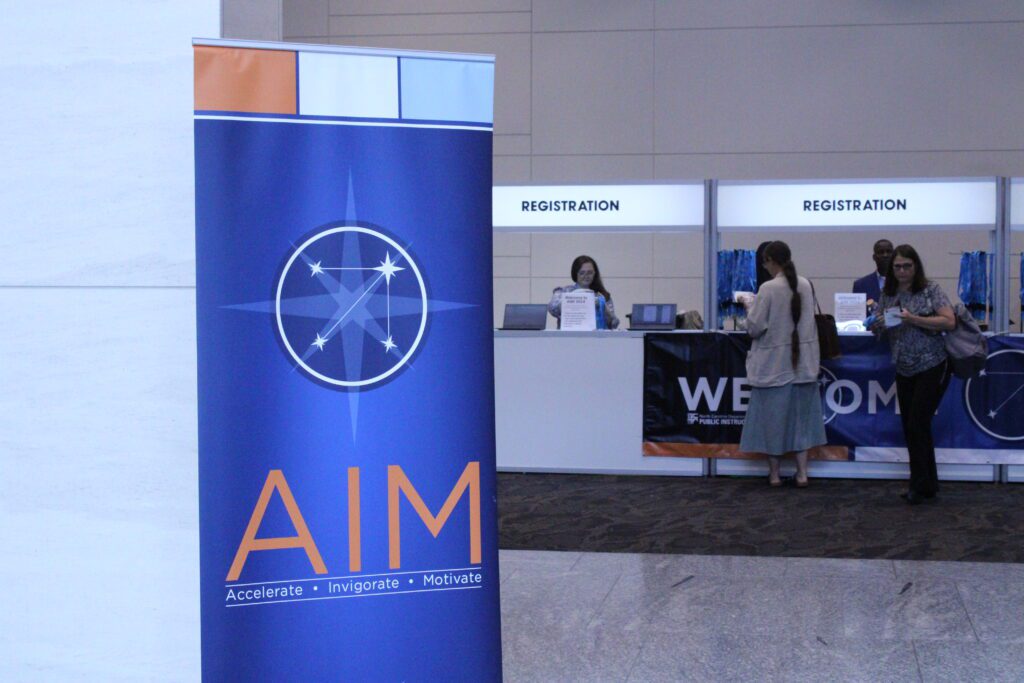
Day of AI
The audience got an introduction to AI and its implications for education from Vera Cubero, the emerging technologies consultant for DPI. She said that it is important for students to gain skills around AI in order to be employable.
Cubero used different types of media and activities to show the audience how fast technology is changing. One demonstration included having OpenAI translate a conversation between her and a Thai speaker – live in front of the audience.
“So the important thing to take away today is that while everybody in this house is not going to be AI developers — you may have a few, some of these students here may end up being developing some of these tools,” Cubero said, “but everybody will be impacted by AI.”
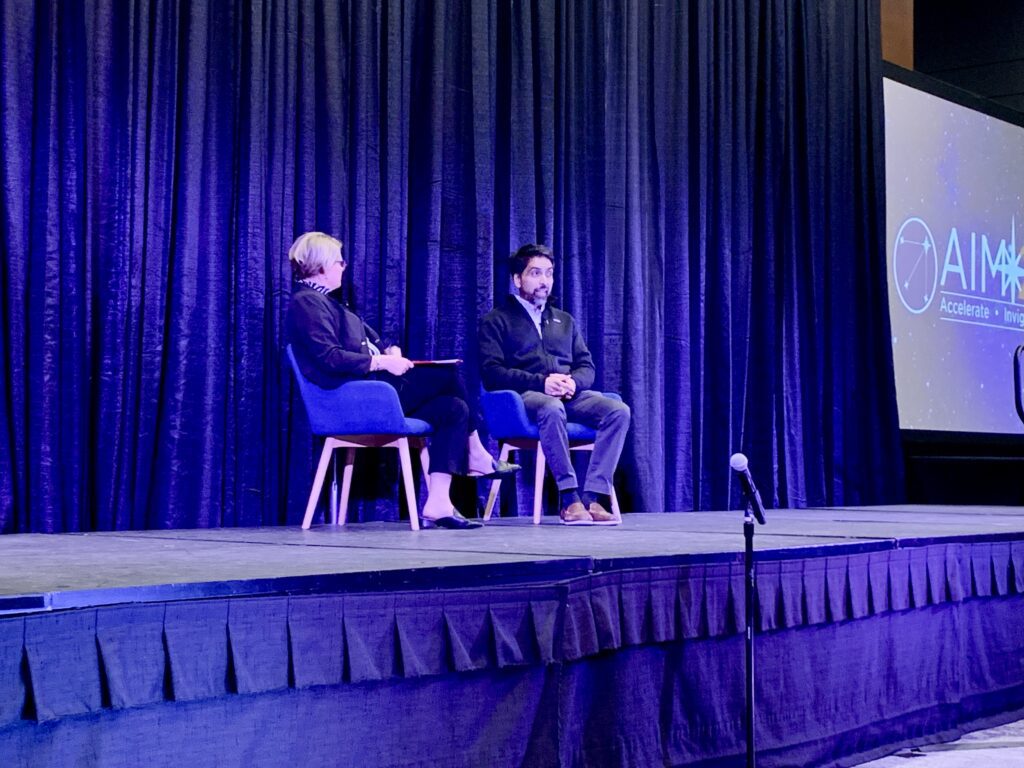
While talking about the state’s guidelines on AI, Cubero described it as “a living document.”
“It is a really good crash course in how to do AI right, how to do it in a balanced way that capitalizes on the benefits while mitigating the concerns and limitations of AI in the school setting,” Cubero said.
In addition to AI, the conference also welcomed their first-ever national speaker: Sal Khan.
Khan is the CEO and founder of Khan Academy. Khan Academy is a nonprofit education organization. In addition to producing short video lessons and readings in a variety of subjects, they provide educational tools for educators.
One of the tools that Khan introduced to conference-goers is an AI guide called Khanmigo. The AI tutor and teaching assistant is free to access by every teacher in the country. The goal of the new tool is to personalize education for students, provide support for teachers, and have safeguards against cheating and misinformation.
In a Q&A session with Truitt, Khan said, “I tell everyone who is afraid of AI or wants to just pump the brakes and slow down, ‘Look, even I sometimes feel like it’s happening maybe a little bit too fast, but we might pump the brakes, but the folks who have bad intent won’t. All technology is fundamentally neutral. It’s an amplification of human intent.’”
The conference offered 32 breakout sessions related to AI and its applications to the classroom. Students also demonstrated robotics, coding, and virtual reality technologies. Attendees found resources that they could see themselves bringing back to their schools.
Timothy Marshmon, a teacher in Wake County, said he was originally skeptical of the technology after hearing stories of children using AI to cheat in the past.
“How can you integrate this and utilize it without it taking over, and knowing that the fidelity of the work is truly the students work?” Marshmon said. “But it’s just always good to learn new knowledge, especially when you’re talking technology, because technology evolves so quickly, and as teachers and just people in general, we need to stay on top of those things, especially when we’re dealing with younger minds this morning.”
Portrait of a Graduate
Beyond the frisbee tossing robots, drumline performance, a scavenger hunt between convention vendors, and free books from Bojangles, all of the educators in attendance knew they had a great task at hand: preparing their students for the future.
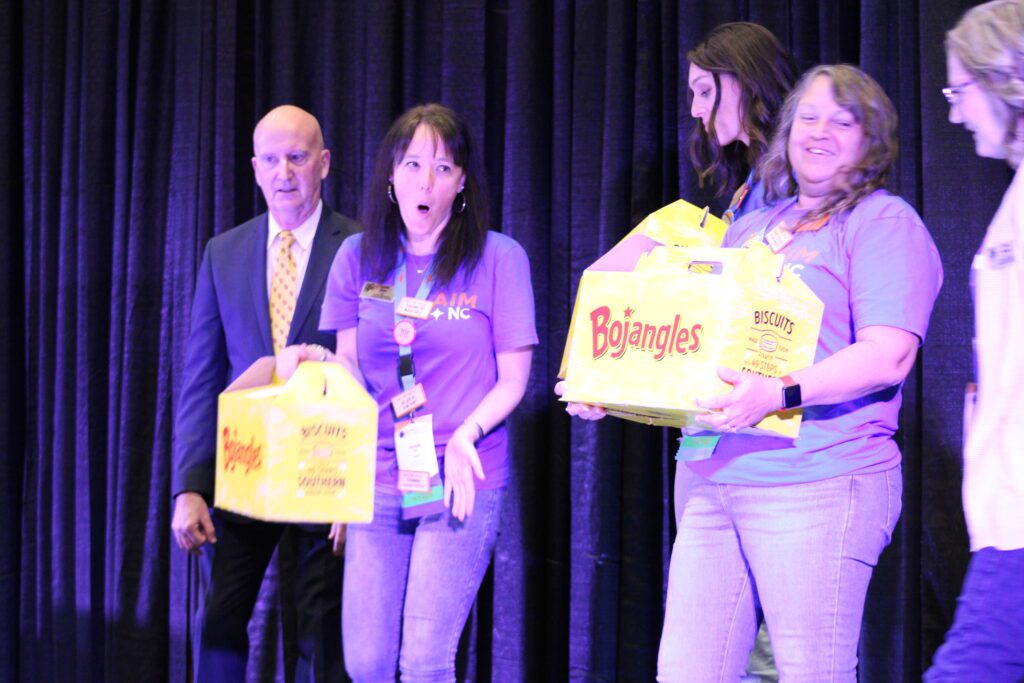
Truitt said the key to this is the Portrait of a Graduate. The portrait is a shared language and tool kit that districts use to give students the ability to adapt, collaborate, communicate, think critically, show empathy, learn, and take personal responsibility. Last year, all of the conference sessions were required to align with the values outlined in the framework.
“When we consistently incorporate the Portrait of a Graduate skills into our daily lesson plans and their lives, we’re creating people who will change the world,” Truitt said. “We’re opening our students up to unfathomable possibilities, and we’re setting them up for successful, fulfilling lives, no matter what path they choose after high school graduation.”
Students of all ages performed different ways that they gain the portrait’s durable skills. For instance, there was Charlotte Reece. Reece is a nursing fundamental student at Career Center High School in Forsyth County. She also has a hearing disability.
To show how Career Center embraces the portrait’s adaptability pillar, Reece demonstrated how to use her electronic stethoscope. It has a volume button and Bluetooth capabilities for people with a cochlear implant. Reece herself does not have one, but she pointed out how helpful this tool is.
“On the first day of school, I informed my teacher myself that I have a 504 plan, and with that I have a hearing disability. She informed me that there are specialized tools like this stethoscope that I can use to help me better succeed,” Reece said.
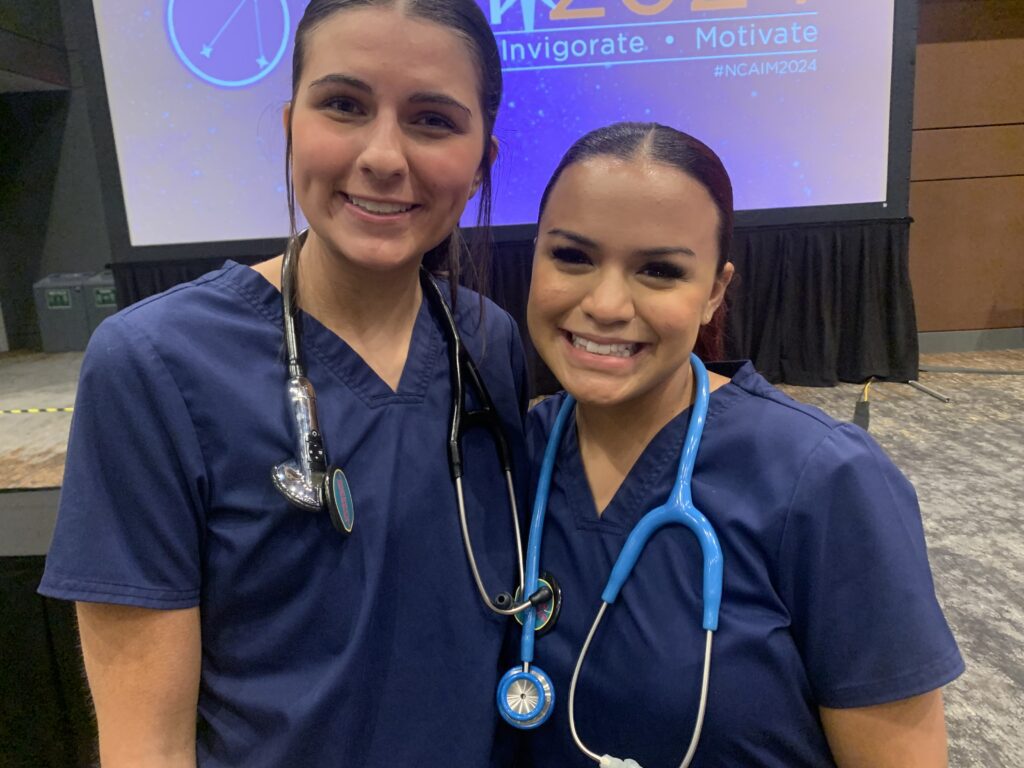
A large lens was also put on preparing the next generation of educators through a breakout session and a lunch session tabling session, which featured eight beginning teacher support initiatives. Another first for the conference, Truitt said this was a must-have.
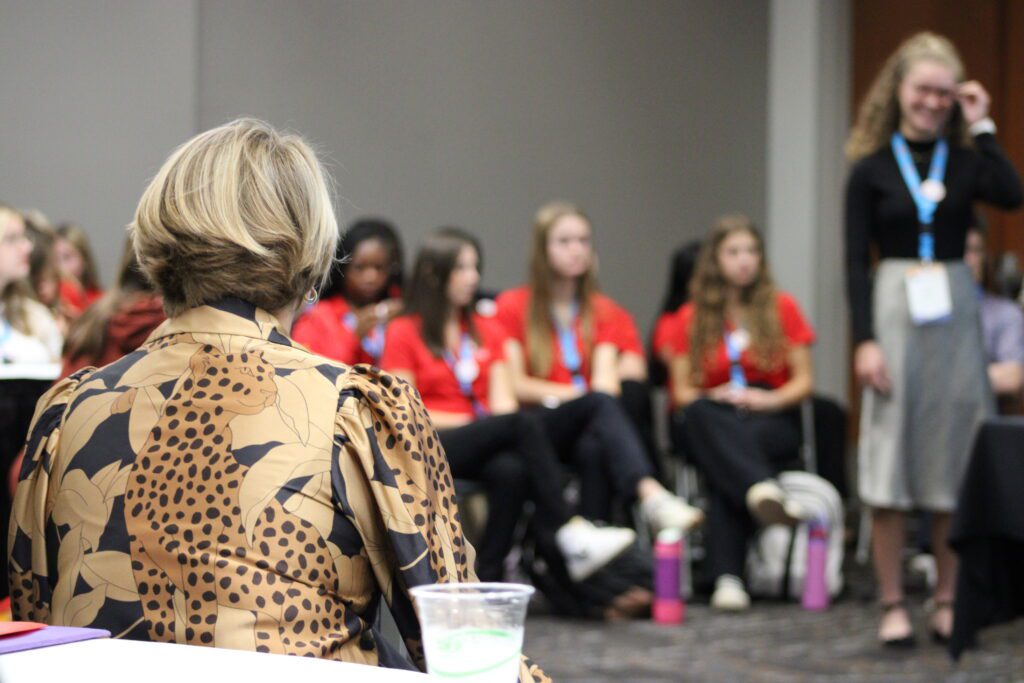
In her speech in front of current educators and high schoolers who were interested in teaching, she pointed to the fact that 15% of people who have been teachers for three years or less quit. She said that there should be more supports for those beginning teachers.
“In order for more young people to want to go into this profession, we need to change the profession a little bit. This profession right now doesn’t appeal to a lot of young people because there’s no opportunity to advance,” Truitt said. “You don’t get promoted in education unless you decide you want to go into administration, which was — no offense, principals– not something I ever wanted to do. But if you don’t want to go into administration and you want to stay in the classroom, there’s no way to get promoted.”
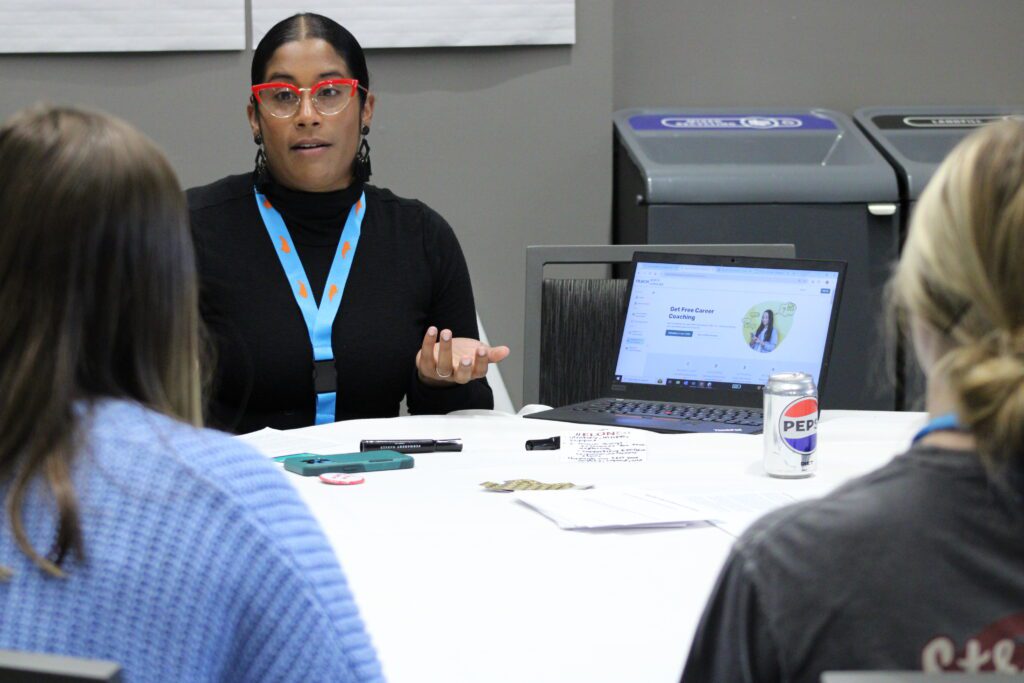
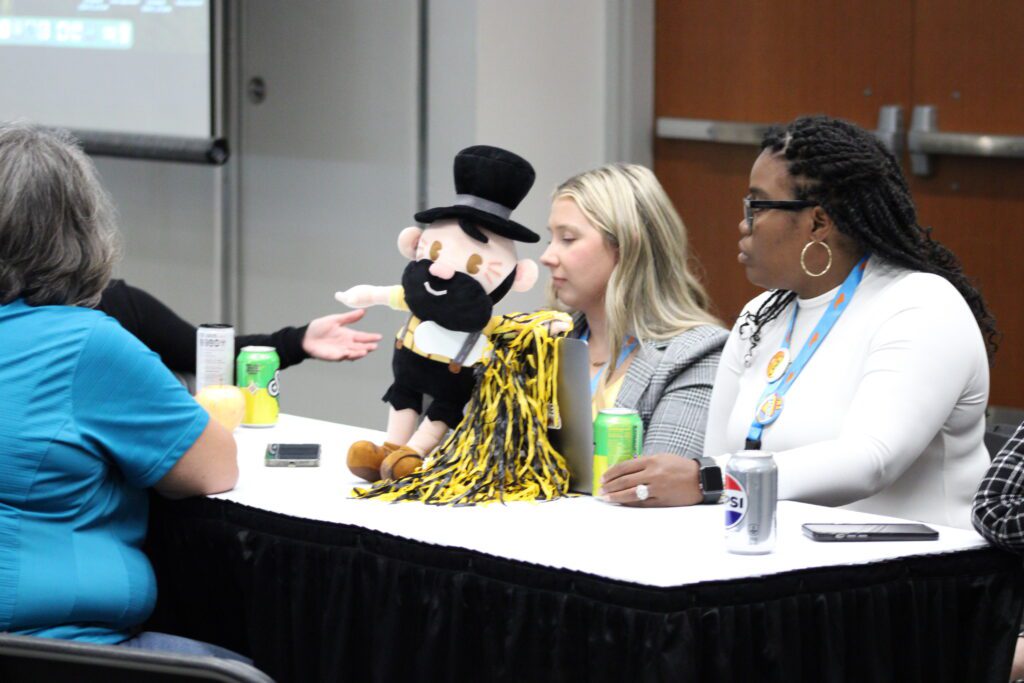
Preparing the future, managing the present
By the end of the conference, educators knew that they had a duty to prepare their students for the future. So how can educators prepare students for the future, while handling the barriers of the present?
Some educators were unable to attend in the aftermath of Hurricane Helene, the storm that impacted 25 counties in the western part of the state and the Qualla Boundary.
Julie Pittman and Heather Smith are educators who both live in western North Carolina. They told the audience that they both have children who are not in school right now because of the storm. They also told the crowd that many of their neighbors and colleagues could not attend because they are managing their recovery.
Smith said that where she lives, in Haywood County, they were already in a state of rebuilding after Tropical Depression Fred and the closure of Canton paper mill.
“Our community, as much as they wanted to prepare and to be ready for this, as people in the mountains, you can’t prepare for a mudslide, you can’t prepare for things like that. And so our community was already in this place of rebuilding already, and feeling like we were back on our feet,” Smith said.
The educators also said that they would need help beyond sending supplies.
Pittman offered ways for people to donate to disaster relief funds.
“My daughters and I just worked at their school, which is our Central High School in Rutherford County,” Pittman said, “and there, that principal is the Western Region Principal of the Year, who couldn’t make it to be here with us because they’re running a Red Cross shelter out of our school.”
Pittman said that students often feel safe and secure when they are around their teachers, and the first instinct for many was to check on each other.
For people who do not live in the region impacted, Pittman said that they should still talk to their students and explain what is happening in the west, as well as other parts of the world. It is all a part of a “communal, human, collective story.”
More on Helene
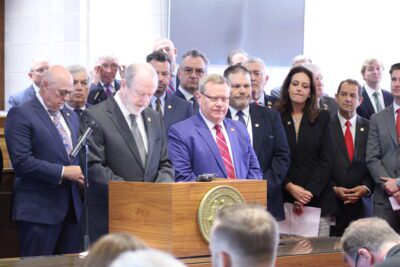
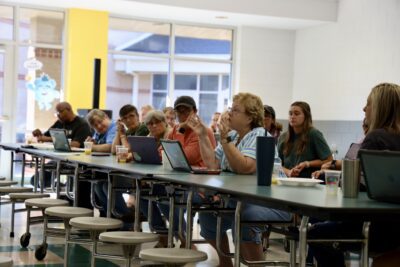

High school students at the conference gave a bigger outlook of what educators could do in the present to help them.
James Walsh, a career and technical education student in Davie County, presented with his peers about a manufacturing internship he got with the help of their school’s program. He said that to prepare him for the future and in his internship, he likes receiving direct guidance and not being left on his own to figure things out.
“Let’s work on it together so they can kind of teach us what they know. We could furthermore extend our abilities to do projects and design for engineering,” Walsh said.
Rebecca Torres, who is also in the nursing program in Forsyth County, said that she had to adapt to the different ways each teacher instructs along with the new skills she was acquiring. She and Reece said it was helpful when they were spoken to “like adults.”
“I feel like a lot of people can sometimes look down on you, and I think just talking to us… being mature about everything can also really help also,” Torres said.
Overall, Truitt said that the event was successful, and it is important that it continues to be held each year. She said it is important for teachers to take time away from the classroom to invest in themselves professionally.
“I think having this conference be free for teachers, as it has been, is really important,” Truitt said. “I mean, I think it’s good for them to get out of their communities and see teachers from other communities and hear what’s going on – and know that they’re not alone in the joys and the struggles of being a teacher. But I think that it’s essential that we continue, that the department continues to provide those kinds of opportunities for our educators.”
Editor’s note: This article was updated to correct the spelling of Charlotte Reece’s name.
Recommended reading
